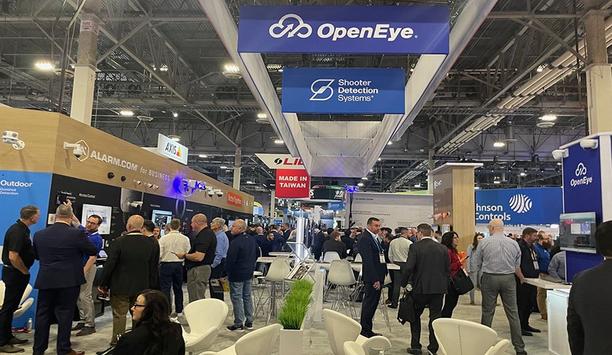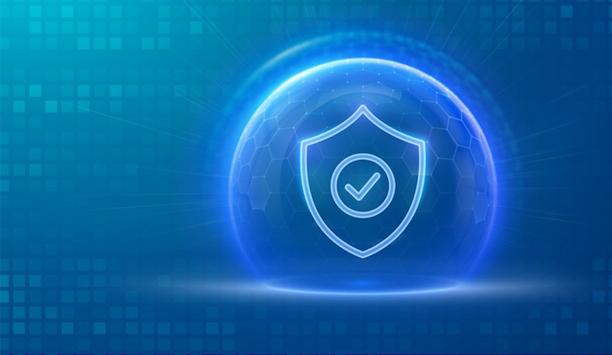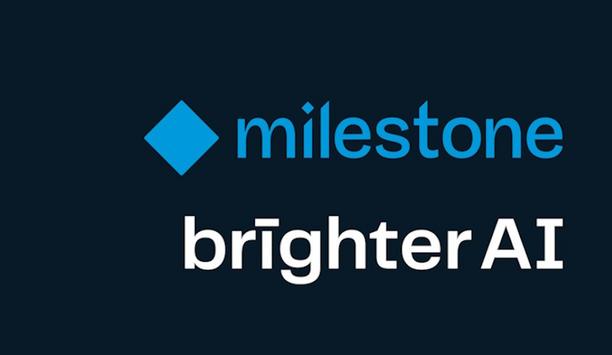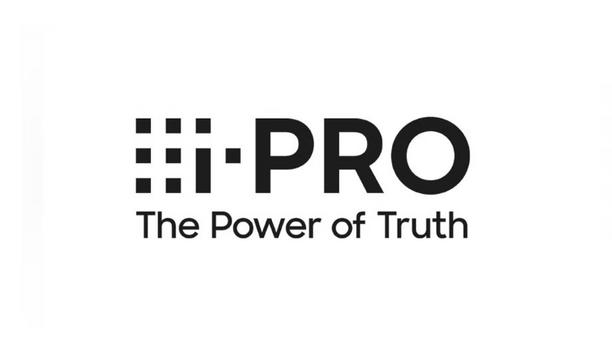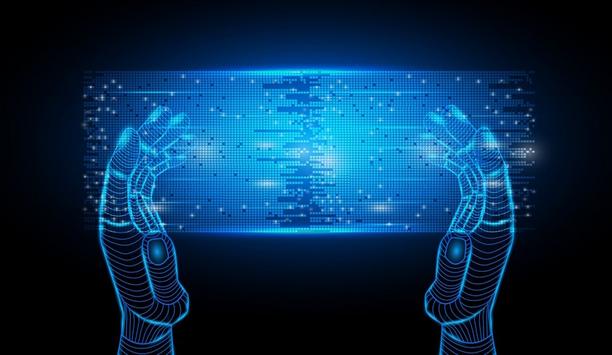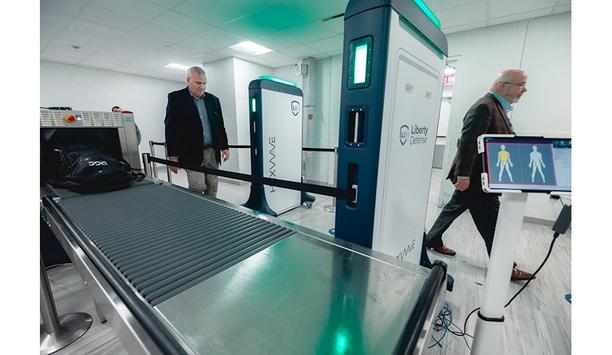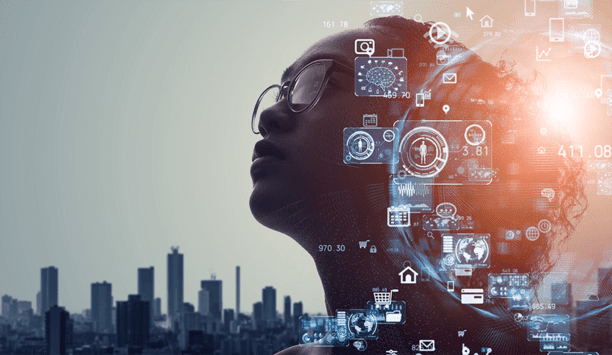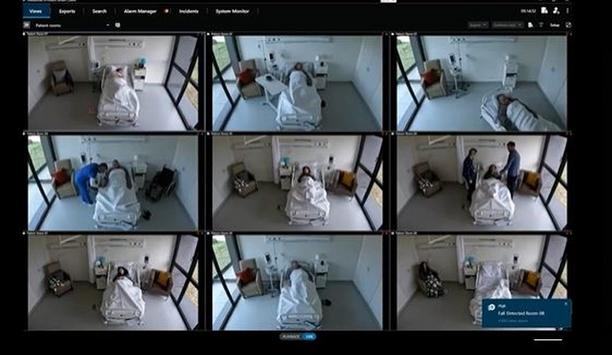Machine Learning
Artificial Intelligence isn’t just a buzzword anymore. It has become part of our lives, and its uses and applications are growing every other day. Even the public sector, which usually is a late adopter of new technologies, has come onboard this new train. Law enforcement, in particular, has seen the advantages different AI technologies can offer to their work and has started to integrate them into their workflow and daily routines. But there is much more to come. Task automation: AI as...
Cisco has made several transformative innovation and partnership announcements that will help security professionals secure and harness the power of AI. An increasingly sophisticated threat landscape combined with an expanding talent shortage means the need has never been greater for machine scale security and response. According to Cisco’s upcoming 2025 Cybersecurity Readiness Index, companies worldwide underestimate the complexities of securing AI, with 86% saying their organisations ha...
Abnormal AI (Abnormal Security), the globally renowned company in AI-native human behaviour security, has unveiled its most ambitious product release to date — introducing autonomous AI agents that revolutionise how organisations train employees and report on risk, while also evolving its email security capabilities to continue to stop the world’s most advanced email attacks. In a year defined by the explosive use of malicious AI for cybercrime, Abnormal is doubling down on its miss...
Lenovo announced its largest storage portfolio refresh in company history, unveiling new Lenovo Data Storage Solutions that prepare enterprise IT for the age of AI with better efficiency, performance and scalability. Ushering in a new era of AI-optimised storage that propels business transformation, the complete portfolio includes storage arrays, software defined storage (SDI), and new AI and virtualisation innovations to flexibly address rapidly evolving data operations. Lenovo’s ongoin...
Anyone who has been in a proverbial cave for the last couple of years faced a language barrier at this year’s ISC West 2025 trade show. The industry’s latest wave of innovation has brought with it a new bounty of jargon and buzzwords, some of which I heard at ISC West for the first time. As a public service, we are happy to provide the following partial glossary to promote better understanding of the newer terms. (Some are new to the security industry but have been around in the IT...
Hikvision has achieved two prestigious international certifications: ETSI EN 303 645 and EN 18031. The certifications were awarded by Bureau Veritas, a globally renowned third-party inspection, testing and certification organisation. This achievement underscores Hikvision’s commitment to security and compliance in its IoT products. ETSI EN 303 645 certification ETSI EN 303 645 certification is a European standard focused on the security of IoT devices The ETSI EN 303 645 certification...
News
Eviden, the Atos Group business pioneering in digital, cloud, big data and security announces the signature of a 50-million-euro contract with the Serbia’s Office for IT and eGovernment. Together, Eviden and the Serbian administration will deploy a National AI Factory – composed of an AI Centre of Excellence and a pioneering AI-dedicated supercomputing platform – aiming to accelerate Serbia’s AI capabilities and foster innovation across key sectors while reinforcing its technological autonomy using European technologies. AI innovation and growth Eviden will empower Serbia to address the growing challenges and requirements of AI More than just a simple infrastructure, an AI Factory is an extensive and complete set of shared AI-dedicated assets – talents, expertise, software, hardware – to foster AI innovation and growth, to democratise its use and to drive successful large-scale projects. By providing all necessary resources with European technologies through this single contract, Eviden will empower Serbia to address the growing challenges and requirements of AI. Advanced software layers This new National AI Factory, a first in the Balkan region, will integrate cutting-edge supercomputing resources, advanced software layers and specialised vertical expertise for use-case design and deployment. This dynamic ecosystem will be made accessible to Serbian public institutions, academic players and businesses in order to harness the power of AI and address critical challenges in health, energy, transportation and administration. Innovative AI use cases Eviden deploys its BullSequana XH3000 supercomputer, designed in its French flagship factory To meet Serbia’s needs for computing power, Eviden will deploy its BullSequana XH3000 supercomputer, designed and manufactured in its French flagship factory. With up to 25 PetaFlops of computational power – the equivalent of 25 million billion operations per second – as well as 300 GPUs and 2.5 Petabytes of storage, this AI supercomputer will serve as the backbone of this AI Centre of Excellence, providing the necessary computing power to develop and run innovative AI use cases. Implementation of Eviden’s BullSequana AI platform In addition to this AI-dedicated hardware, the project will see the implementation of Eviden’s BullSequana AI platform, designed to accelerate AI applications development. The Eviden software layer will integrate Mistral AI assets who brings its pioneering European GenAI models to help drive groundbreaking use cases. Application of AI to Serbia’s strategic sectors AI specialists will bring their deep sense of sector-specific needs, ensuring an effective application of AI This combination of hardware and software capabilities will be complemented by a vertical AI expertise drawn from Eviden’s teams in France, Czech Republic and Serbian AI ecosystem. These AI specialists will bring their deep understanding of sector-specific needs, ensuring an effective application of AI to Serbia’s strategic sectors. They will also assist in recruiting and training engineers and academics across Serbia, ensuring the AI Centre of Excellence becomes a self-sustaining hub for innovation. Application of artificial intelligence Mihailo Jovanovic, PhD, Director of the Office for IT and eGovernment, Government of the Republic of Serbia, said, “This partnership with Eviden, Europe’s pioneering supercomputing and AI player, is a historic moment for our country’s digital future, demonstrating the spirit of Franco-Serbian cooperation." "It is not just a technological leap but a statement of our commitment to foster innovation, advanced our economy and strengthen our position as regional pioneer in AI. This project is a key step towards implementing Serbia’s vision in accordance with "Leap into the Future – Serbia 2027" Program and plans for further modernisation, digitalisation, and the application of artificial intelligence.” How Europe’s technology pioneers can drive AI innovation Emmanuel Le Roux, Head of Advanced Computing, Eviden, Atos Group, said, “With its investment and current leading responsibility in the Global Partnership on AI, Serbia has been at the forefront of AI research and application in Europe." "This one-of-a-kind project is yet another example of its commitment toward technological advanced and economic growth, while contributing to the strategic cooperation between France and Serbia for AI and reinforcing the country’s technological sovereignty. It underlines Eviden’s unique end-to-end positioning and demonstrates once again how Europe’s technology pioneers can drive AI innovation while ensuring technological autonomy and sovereignty.”
Milestone Systems is pleased to announce the acquisition of brighter AI, effective April 1, 2025. The Berlin-based technology company, brighter AI, provides anonymisation solutions for video data based on state-of-the-art deep learning technology to protect people’s identities in public. The advances of artificial intelligence raise concerns around data privacy across the world. One of the biggest challenges in developing AI solutions is finding and accessing sufficient data that can be used. Essential for AI technologies There are no AI models to train, which are vital for existing AI technologies, such as ChatGPT Without data, there are no AI models to train, which are essential for existing AI technologies such as ChatGPT and Copilot. This challenge is particularly significant in video data, where it is even more difficult to find data that does not contain sensitive personal information. The solution lies within regulatory-compliant data and this is exactly what brighter AI’s anonymisation technology brings. New opportunities with anonymisation capabilities The acquisition of brighter AI also opens up a range of new opportunities with anonymisation capabilities and privacy enhancement, which protects data and enables full data privacy. The addition of brighter AI significantly strengthens Milestone’s offerings for video management software, video surveillance as a service and video analytics and fuels the company’s ongoing growth journey in and beyond security. Additionally, brighter AI’s anonymisation technology serves as a cornerstone of the recently announced data library and AI model training tool Project Hafnia. Strengthening European competitiveness Combining two European tech pioneers with a focus on taking a responsible approach to AI development The privacy-by-design tool developed by brighter AI further solidifies Milestone’s position as a pioneering Responsible Technology company. Combining two European tech pioneers with a focus on taking a responsible approach to AI development will be a significant contribution to making Europe the pioneer in the global AI and tech landscape. It is a testament to European innovation and strengthens the continent’s competitiveness whilst protecting individual citizen’s privacy. Anonymisation tool for video technology “brighter AI is a perfect match for Milestone. Their proven technology is top-notch and will give us a wider offering to existing and future technology partners and customers. The anonymisation tool for video technology will also enhance our focus on responsible technology." "Even more important, our two company cultures are highly compatible. Having known brighter AI for a while, as we have an established collaboration on Project Hafnia, I have complete faith that this will be a great benefit for all. I am indeed very pleased to welcome our new colleagues to Milestone,” says Thomas Jensen. Anonymisation solution for video data based on AI Founded in 2017 by Marian and Patrick Kern, brighter AI serves companies across various sectors and is the pioneering anonymisation solution for video data based on artificial intelligence. For the solution Deep Natural Anonymisation, which automatically detects a personal identifier such as a face and generates a synthetic replacement, brighter AI was named “Europe’s Hottest AI Startup” by Nvidia. Future of visual AI brighter AI serves across various sectors and is the anonymisation key for video data “brighter AI was founded with the mission to make visual data usable in a privacy-preserving way. Joining Milestone Systems marks an exciting new chapter—together, we can scale that mission to a global level out of Europe. Milestone’s leadership in responsible video technology and their vision with Project Hafnia align perfectly with our own values." "We’re proud that our anonymisation solutions will become a core pillar of a platform that’s set to redefine how compliant, high-quality video data is used to train AI. We’re ready to shape the future of visual AI—secure, ethical, and transformative,” Marian Gläser says. Focus on responsible AI development Milestone Systems is acquiring brighter AI and are thereby significantly contributing to strengthening European competition power and innovation. Europe must be pioneering in setting the right standards for global responsible technology. By combining two European tech pioneers with a dedicated focus on responsible AI development, Milestone contributes to making Europe a pioneer in the global AI and tech landscape. brighter AI employs 24 people. who will continue their great work as part of a separate business area within Milestone.
Artificial Intelligence Technology Solutions, Inc., announced that its wholly owned subsidiary Robotic Assistance Devices, Inc., (RAD), has received two major awards at the 2025 Security Industry Association (SIA) New Products and Solutions (NPS) Awards. SARA™, RAD’s AI-powered incident response platform, earned the prestigious Judges’ Choice Award and was also selected as the winner in the Threat Detection and Response Solutions category. Both honours were presented on the ISC West show floor during an April 2 ceremony. SARA SIA NPS judges “We are tremendously honoured to have SARA recognised by the SIA NPS judges with both the Judges’ Choice Award and category win,” said Steve Reinharz, CEO/CTO of AITX and RAD. “These awards are somewhat our industry’s equivalent to the Grammys or Oscars, and it feels like we just won Best Album or Best Picture of the year. SARA is designed to meet the increasing demand for intelligent, proactive solutions that elevate security while streamlining operations. These awards will potentially help accelerate industry adoption and AITX growth.” RAD’s ecosystem of devices SARA provides an intelligent layer of automation that now evaluates events and initiates appropriate actions SARA, which stands for Speaking Autonomous Responsive Agent, is RAD’s AI-powered platform designed to manage and escalate security incidents in real time. Developed to work seamlessly across RAD’s ecosystem of devices and monitoring systems, SARA provides an intelligent layer of automation that instantly evaluates events and initiates appropriate actions, including verbal engagement, alert escalation, and live video streaming. Incorporate SARA into Immix’s platform With its ability to respond to a wide range of security triggers, SARA significantly enhances situational awareness and operational efficiency while reducing the need for constant human oversight. This recognition comes just one day after RAD announced its integration agreement with Immix®, a pioneer in central station automation software. The collaboration will incorporate SARA into Immix’s platform, enabling monitoring centres worldwide to benefit from AI-powered response automation. SARA’s revenue and long-term growth The integration is hoped to accelerate SARA’s adoption across retail, residential, and enterprise domains The integration is expected to accelerate SARA’s adoption across commercial, residential, and enterprise environments, reinforcing its position as a transformative force in the remote monitoring industry. “SARA is more than a product, it’s the intelligence engine behind our entire ecosystem,” added Reinharz. “It represents years of focused development and is central to how we’re redefining security. From frontline deterrence to real-time response and reporting, SARA is enabling RAD to deliver measurable value to clients while driving recurring revenue and long-term growth for the Company.” New security technology solutions “SIA congratulates the winners of the 2025 SIA NPS Awards,” said SIA CEO Don Erickson. “Each year, NPS presents the most cutting-edge products available on the market today, and our judges’ dedication, support and thorough consideration are invaluable in maintaining it as the most trusted awards program for launching new security technology solutions.” Amazing new products and solutions “This year’s SIA NPS program has had another fantastic year with amazing new products and solutions presented to our judging panels,” said Christine Bergeron, chair of the SIA NPS Awards Committee and senior director of global physical security technology at Visa. “Thank you to our expert judges and committee members for your dedication to the program and lending your expertise and valuable time to contribute to a successful 2025 SIA NPS program.” Renowned global platform SIA NPS has been the security industry’s premier product awards program “The SIA NPS Awards are a renowned global platform for highlighting new offerings each year, and earning recognition is an impressive accomplishment,” said Elisa Mula, vice chair of the SIA NPS Awards Committee and founder and protection management specialist at EM Designs. “SIA applauds this year’s winners, who impressed our judges after an extensive process of tech demonstrations and panel-driven judging.” Security and guarding services Since its inception in 1979, SIA NPS has been the security industry’s premier product awards program. New products are reviewed by a panel of judges with extensive industry experience, and in 2025, following significant deliberations, the 38 judges presented awards for technologies covering 33 product and service categories. AITX, through its subsidiary, Robotic Assistance Devices, Inc. (RAD), is redefining the nearly $50 billion (US) security and guarding services industry through its broad lineup of innovative, AI-driven Solutions-as-a-Service business model. RAD mobile robotic solutions All RAD technologies, AI-based analytics and software platforms are developed in-house RAD solutions are specifically designed to provide cost savings to businesses of between 35%-80% when compared to the industry’s existing and costly manned security guarding and monitoring model. RAD delivers these tremendous cost savings via a suite of stationary and mobile robotic solutions that complement, and at times, directly replace the need for human personnel in environments better suited for machines. All RAD technologies, AI-based analytics and software platforms are developed in-house. RAD new business RAD has a prospective sales pipeline of over 35 Fortune 500 companies and numerous other client opportunities. RAD expects to continue to attract new business as it converts its existing sales opportunities into deployed clients, generating a recurring revenue stream. Each Fortune 500 client has the potential of making numerous reorders over time.
At The Security Show (TSE), on stand 5/G55, i-PRO Co., Ltd. (formerly Panasonic Security), a pioneering manufacturer of edge computing cameras for security and public safety, will showcase its brand new U-series range of AI-powered cameras for the first time in the UK. Designed and manufactured in Japan, the U-Series delivers the accuracy of AI-based object detection to entry-level security installations. Benefit from AI-driven analytics U-Series delivers the accuracy of AI-based object detection to entry-level security installations Built on efficient edge-computing architecture, it offers advanced capabilities — including intrusion detection, loitering alerts, direction monitoring, speeding, and line-crossing detection — without compromising on performance or affordability. “After pioneering AI across our higher-end cameras, we’re excited to bring that same edge-based intelligence to the entry-level market,” said Gerard Figols, Chief Operating Officer at i-PRO. “Security organisations of any size can now benefit from AI-driven analytics.” U-series highlights AI Video Motion Detection (AI-VMD) Built-in audio recording Direct-to-cloud VSaaS support FIPS 140-3 Level 3 cybersecurity compliance Future firmware updates The new lineup includes high-resolution imaging options — 2MP, 5MP, and 4K — in dome, box, and bullet formats, delivering enhanced clarity and precision. Built for flexibility, the U-series is an ideal fit for direct-to-cloud VSaaS deployments. With future firmware updates planned, these cameras will continue to evolve, adding new capabilities while maintaining a lightweight, efficient architecture. Adding AI to the U-Series cameras embodies i-PRO’s mission to democratise AI as a standard feature across all its camera lines, delivering real-time alarms, improving response times, strengthening data privacy and reducing bandwidth use. Active guard analytics Visitors are able to see the latest version of its award-winning Active Guard intelligent search application At TSE, visitors will also be able to see the latest version of its award-winning Active Guard intelligent search application. Active Guard ensures that the wealth of metadata (98 unique characteristics from the X and S-series camera line-up) describing the unique attributes of humans and vehicles captured by i-PRO cameras are seamlessly delivered to popular Video Management Systems (VMS) from Milestone, Genetec, and others. This not only allows deep forensic search from edge-based AI analytics but also enables real-time notifications for operators of essential events that require attention. High zoom bullet and corner cameras Shown at TSE for the first time, the new High Zoom Bullet camera includes the longest IR illumination in its class (up to 250m) and unique automated functions that remove the burden from operators when focusing on unique objects of interest. For example, a High-Zoom bullet camera might initially show a wide-angle view of a street by default. When a vehicle is detected at an entrance, the camera can automatically zoom in and capture the licence plate using Vaxtor ALPR analytics (pre-bundled with the camera). This type of automation requires no intervention by the operator, making it a perfect match for safe cities. Open platform–freedom of choice Customers and integrators are never locked into a proprietary approach, and can pick the best analytics The company’s open-platform approach ensures flexibility and scalability for the unique analytics requirements of every installation through the use of third-party tools. Customers and integrators are never locked into a proprietary approach, and can choose the best analytics for the job from the best development partners like Vaxtor, Noema and many more. Cybersecurity and ethical AI Every i-PRO product is designed with cybersecurity and data integrity at its core. While many companies follow FIPS 140-2 standards, the new U-Series goes further, achieving FIPS 140-3 Level 3 compliance. Powered by an NXP EdgeLock secure element, these cameras meet the industry’s highest data security standards. Level 3 certification introduces stricter cryptographic protections, enhanced physical tamper resistance, and safeguards against key extraction and hardware attacks. With secure boot functionality, the U-Series offers robust defense against unauthorised access and cyber threats — even at the entry-level. ISO/IEC 42001 certification for AI i-PRO is the first company in the physical security industry to reach this level of ethical AI governance Recently, the company also announced it is in the final stage of obtaining the ISO/IEC 42001 certification for its Artificial Intelligence (AI) management systems. Once completed, this certification will make i-PRO the first company in the physical security industry to reach this level of ethical AI governance, reinforcing its commitment to transparency, accountability, and security in AI deployment. Innovation driven by independence Since becoming independent from Panasonic, i-PRO has evolved into an agile, customer-first company, bringing to market over 250 new camera models in the last couple of years. “Our independence allows us to stay laser-focused on our customers,” said Jose Riolobos, EMEA President at i-PRO. “By combining more than 60 years of Japanese engineering expertise with a flexible, market-driven approach, we deliver high-end technology built for real-world needs.”
Keysight Technologies, Inc. introduces Keysight AI Data Centre Builder, an advanced software suite that emulates real-world workloads to evaluate how new algorithms, components, and protocols impact the performance of AI training. KAI Data Centre Builder’s workload emulation capability integrates large language model and other artificial intelligence (AI) model training workloads into the design and validation of AI infrastructure components – networks, hosts, and accelerators. Efficient model partitioning During the AI cluster design phase, critical questions are best answered through experimentation This solution enables tighter synergy between hardware design, protocols, architectures, and AI training algorithms, boosting system performance. AI operators use various parallel processing strategies, also known as model partitioning, to accelerate AI model training. Aligning model partitioning with AI cluster topology and configuration enhances training performance. During the AI cluster design phase, critical questions are best answered through experimentation. Many of the questions focus on data movement efficiency between the graphics processing units. Network Load Balancing Key considerations include: Scale-up design of GPU interconnects inside an AI host or rack Scale-out network design, including bandwidth per GPU and topology Configuration of network load balancing and congestion control Tuning of the training framework parameters The KAI Data Centre Builder workload emulation solution reproduces network communication patterns of real-world AI training jobs to accelerate experimentation, reduce the learning curve necessary for proficiency, and provide deeper insights into the cause of performance degradation, which is challenging to achieve through real AI training jobs alone. Keysight customers can access a library of LLM workloads like GPT and Llama, with a selection of popular model partitioning schemas like Data Parallel, Fully Sharded Data Parallel, and three-dimensional parallelism. Infrastructure performance Using the workload emulation application in the KAI Data Centre Builder enables AI operators to: Experiment with parallelism parameters, including partition sizes and their distribution over the available AI infrastructure Understand the impact of communications within and among partitions on overall job completion time Identify low-performing collective operations and drill down to identify bottlenecks Analyse network utilisation, tail latency, and congestion to understand the impact they have on JCT The KAI Data Centre Builder's new workload emulation capabilities enable AI operators, GPU cloud providers, and infrastructure vendors to bring realistic AI workloads into their lab setups to validate the evolving designs of AI clusters and new components. They can also experiment to fine-tune model partitioning schemas, parameters, and algorithms to optimise the infrastructure and improve AI workload performance. AI infrastructure optimisation Ram Periakaruppan, Vice President and General Manager, Network Test & Security Solutions, Keysight, said: "As AI infrastructure grows in scale and complexity, the need for full-stack validation and optimisation becomes crucial. To avoid costly delays and rework, it's essential to shift validation to earlier phases of the design and manufacturing cycle. KAI Data Centre Builder’s workload emulation brings a new level of realism to AI component and system design, optimising workloads for peak performance.” Data centre innovation KAI Data Centre Builder is the foundation of the Keysight Artificial Intelligence architecture, a portfolio of end-to-end solutions designed to help customers scale artificial intelligence processing capacity in data centres by validating AI cluster components using real-world AI workload emulation. Keysight will showcase KAI Data Centre Builder and its workload emulation capabilities in booth #1301 at the OFC 2025 conference, April 1-3, at the Moscone Centre, San Francisco, California.
i-PRO Co., Ltd. (formerly Panasonic Security), a pioneering manufacturer of edge computing cameras for security and public safety, today announced it is in the final stage of obtaining the ISO/IEC 42001 certification for its Artificial Intelligence (AI) management systems. Once completed, this certification will make i-PRO the first company in the physical security industry to reach this level of ethical AI governance, reinforcing its commitment to transparency, accountability, and security in AI deployment. AI management systems Published in December 2023 by the International Organisation for Standardisation (ISO) and the International Electrotechnical Commission (IEC), ISO/IEC 42001 is the first international standard for AI management systems. It sets best practices for the ethical development and use of AI systems, focusing on risk management, transparency, accountability, and continuous improvement—key elements in building trustworthy AI. Forefront of AI research and development ISO/IEC 42001 ensures that companies like i-PRO follow a structured framework for risk assessment As AI continues to transform physical security, ISO/IEC 42001 ensures that companies like i-PRO follow a structured framework for risk assessment, regulatory compliance, and ethical AI deployment. i-PRO has been at the forefront of AI research and development for many years, delivering innovative camera hardware that utilises edge AI technology in the security, public safety, and medical fields. Integrity, safety, and transparency As the company continues to expand its AI capabilities, compliance with global standards will give customers and partners added confidence in the integrity, safety, and transparency of its technology. “Undertaking the rigorous process of getting ISO/IEC 42001 certification underscores our commitment to responsible AI innovation,” said Masato Nakao, CEO of i-PRO. “AI is transforming the way security professionals operate. We believe it’s our responsibility to ensure these technologies are developed and deployed ethically, transparently, and in ways that respect human rights.” i-PRO’s AI management practices The certification process involved a comprehensive independent audit conducted by the BSI The certification process involved a comprehensive independent audit conducted by the British Standards Institute (BSI), which assessed i-PRO’s AI management practices across its product development, deployment, and operational workflows. "AI has the potential to be a significant force for good in society, transforming lives everywhere. But to realise its benefits, having the guardrails in place for the safe and ethical use of AI is critical. As the first physical security company to undergo the certification process for this new standard, i-PRO demonstrates its leadership in ethical AI development," said Tim McGarr, AI Market Development Lead at BSI. Safe and responsible use of AI Tim McGarr added: "Certification to this standard offers reassurance to stakeholders on the safe and responsible use of AI in an organisation’s products and services, paving the way for them to harness AI to accelerate progress towards a better future and a sustainable world." "It’s fantastic to see the i-PRO team reach the final stage of certification, and we look forward to supporting them through the completion process."


Expert commentary
Retailers now often find themself in a precarious situation. Profit margins are being squeezed by widespread shoplifting: The Council on Criminal Justice reports that between the first half of 2023 and the first half of 2024, shoplifting reports increased by 24%. Meanwhile, the strategies used by shops to deal with this situation are alienating consumers and affecting total sales. Andy Jassy, the CEO of Amazon, stated during an earnings call that customers are now purchasing more pharmaceuticals from Amazon in response to other retailers locking their cabinets. Media reports This crisis impacts not only the large chains—more than 7,100 retail stores were closed in the U.S. in 2024, a 69% increase from the previous year—but also small, local businesses, whose profit margins are even narrower. Media reports out of Los Angeles show that small businesses in regions with greater shoplifting rates are more likely to close, and small business owners' job satisfaction and general well-being are negatively impacted by the fear of crime. How to safeguard staff and inventory Unchecked retail theft demoralises staff and makes the store less attractive to customers This is obviously not a sustainable situation. In addition to lowering revenue, unchecked retail theft demoralises staff and makes the store less attractive to customers. Unfortunately, making customers wait in line to enter a store or locking up toothpaste and deodorant only makes the customer relationship worse. Retailers need to figure out how to safeguard staff and inventory without alienating their customer base—and they need to figure it out fast. Advanced video security A new tool has come to the forefront of this fight: advanced video security. Of course, video surveillance has been used in stores for many years. However, the technology currently being used to reduce retail theft is very different from the outdated analog video systems of the past. With features like cloud-based flexibility and AI-enhanced analytics, this new generation of video surveillance systems has all the advantages of modern technological advancements, while also providing businesses with a competitive edge in the fight against retail theft. Security's new AI video standard Workers are constantly rushing from aisle to aisle in an effort to satisfy eager consumers Although the typical chain pharmacy may appear straightforward to the customer, retailers are aware of how intricate these spaces are. Hundreds or even thousands of shoppers may come and go on any given day, with a larger volume during busy seasons like holidays or special promotional events. It's common for shoppers to pick up merchandise and put it down in another part of the store, often far away from its original location. Meanwhile, workers are constantly rushing from aisle to aisle in an effort to satisfy eager consumers, particularly during these busy seasons. How much can recorded videos reveal in a busy Using traditional CCTV, managers and security teams can monitor some of this activity, but their viewpoint of events will always be incomplete. There is a limit to how much recorded videos can reveal in busy, fast-paced customer situations, and even the largest chain stores lack the staff and resources to continuously sort and evaluate all of the data they collect. When more customers are in the store for a special event, there’s also naturally a higher risk of theft. New generation of video security Using machine learning algorithms trained on large amounts of retail-specific data The new generation of video security aims to provide retailers with comprehensive intelligence that covers all aspects of their operations. Using machine learning algorithms trained on large amounts of retail-specific data, they are focused on predictive actions and can recognise problematic behaviour in real time from raw video footage. AI-powered surveillance For example, if someone entered a store with empty bags but bypassed the cashier and started heading to the exit with a full bag, AI could predict a potential theft before it happens. Instead of just recording the theft, security action could be triggered in the moment. AI-powered surveillance is like an all-seeing security officer, quickly analysing the thousands of variables at play and spotting the warning signs of a possible crime before it happens. This is especially crucial during the holidays and busy shopping periods. Security personnel required to monitor cameras Imagine a chain store with 500 locations and 32 cameras each: that’s 1,600 cameras Cameras with AI can also alert human security personnel of events that would have otherwise been missed. Imagine a chain store with 500 locations and 32 cameras each: that’s 1,600 cameras. Now just imagine the number of security personnel required to monitor all of those cameras – when it comes down to it, traditional security is a numbers game. AI is the differentiator here that will allow retailers to win this game. VSaaS: A new tool to Deter Theft The emergence of Video Surveillance as a Service (VSaaS), a surprisingly under-discussed aspect of the broader SaaS revolution, is an important part of video security’s evolution. VSaaS solutions are especially helpful for chains that require a high level of centralisation and coordination across hundreds or even thousands of locations. In addition to offering action alerts at the shop level, VSaaS offers comprehensive security systems accessible from any location. This gives corporate headquarters access to complete, aggregated insights on all aspects of business operations. Identify the best ways to deploy staff Retail operators are constantly in a state of triage, rushing to identify the best ways to deploy staff This is significant in part because of the importance that social engineering and store layout have in preventing theft. Stores are frequently more busy during specific hours than others, and consumers may congregate in particular areas of the store while others are comparatively empty. Retail operators are constantly in a state of triage, rushing to identify the best ways to deploy staff and organise inventory while accounting for all of these variables. Cloud-based VSaaS solutions Cloud-based VSaaS solutions help streamline this process by eliminating uncertainty, highlighting blind spots and bottlenecks, and informing retailers of what truly works. Another regrettable reality is that employees frequently steal from businesses they work at. Here, too, VSaaS solutions—when combined with sophisticated, integrated access controls—are essential. AI analytics technology Implementation and deployment of VSaaS is also easier and less costly than CCTV Implementation and deployment of VSaaS is also easier and less costly than CCTV. When new AI analytic updates become available, the client software and hardware don’t need to be upgraded, and the onsite technology and cameras also don’t need to be replaced. The AI analytics technology is upgraded in the cloud, enabling faster deployment and implementation of new technology. New VSaaS solutions Theft will always occur at some level; it's just a part of doing business. However, the growth in shoplifting that retailers have experienced in recent years is unacceptable, and if these figures keep rising, the consequences will be disastrous. In a time of dire need for retail, new VSaaS solutions have come to the forefront and are already turning the tide.
Technology advances in the security industry are transforming the way modern systems are designed and installed. Customers today are looking for greater scalability and flexibility, lower up-front costs, and operational efficiency. Cloud-based software as a service (SaaS) solutions, AI-enhanced tools, and IoT-enabled sensors and devices are increasingly in demand. The traditional role of the systems integrator is evolving as a result. While security integrators have always worked closely with end users, today’s pioneers go beyond installation and maintenance. They align security strategies with evolving business needs, integrating IT, cybersecurity, and data-driven insights into their offerings. A look at the past and present Integrators are often asked to help tailor solutions and provide expertise in IT and cybersecurity Traditionally, systems integrators specialised in installing and maintaining wired physical security systems like CCTV, access control, and alarms. The service model was built around large, up-front investments and project-based installations. However, today customers are seeking comprehensive solutions. They’re looking to wirelessly integrate security infrastructure with cloud-based SaaS systems and IoT devices. While modern systems are often faster to deploy, they’re most effective when supported by ongoing consulting and strategic planning. Integrators are often asked to help tailor solutions and provide expertise in IT and cybersecurity. Data requirements and modern systems Data requirements have also changed. Modern systems collect vast amounts of data. Advanced analytics, machine learning, and automation are now must-have tools for actionable insights. Security integrators can help end users set up custom dashboards, automations, and continuous system optimisation. Let’s look at some of the specific ways the role of systems integrators is evolving and how to adapt and succeed. Strengthen your IT expertise Integrators with IT expertise can ensure that hardware is optimised and maintained for peak performance The competitive landscape today includes not just security specialists but also IT-focused integrators and SaaS providers. Systems integrators with expertise in traditional physical security solutions plus IT experience offer unique value. They understand the real-world security challenges and opportunities, along with cybersecurity and network best practices. Integrators with IT expertise can also ensure that hardware is optimised and maintained for peak performance. Their experience with legacy systems allows them to offer practical recommendations on cost-effective approaches, such as upgrading or integrating older hardware with new digital solutions. Consider who’s making the purchase decisions Traditionally, security integrators primarily sold to security directors, facility managers, and operations teams. Now, multiple stakeholders may be involved in decision-making. IT teams, CIOs, and CTOs often weigh in on purchase decisions when cloud-based security and SaaS solutions are under consideration. Customers today aren’t just shopping for cameras, access control panels, alarms, and other hardware components. They’re looking for security ecosystems that can integrate with enterprise-wide IT infrastructure and business applications. When working with these different teams, consider outlining the system's return on investment (ROI). How can the solution reduce risk for various departments? Can it help improve operational efficiency or reduce the time required to onboard and train staff? Will it make regulatory compliance easier to manage? Focus on the long-term value for the entire organisation. Take a consultative approach Another way systems integrators are adding value is by offering vertical specialisation Installation fees remain important for many integrators, but there may be additional consultative opportunities to build long-term relationships with customers. Offer services such as roadmap planning, hardware and integration maintenance, training to certify end users on the manufacturer’s product, and cybersecurity services. While cloud-based solutions reduce on-premises maintenance, they don’t eliminate the need for ongoing support and training. Consider offering training opportunities. These can lead to other benefits as well. Better-educated and technically proficient customers are usually more willing to adopt new technologies. They understand the value of these investments and have more confidence that they’ll see results. Another way systems integrators are adding value is by offering vertical specialisation. Healthcare, sports venues, critical infrastructure, education, retail - each specialty has its own set of challenges, partner networks, regulatory restrictions, training needs, and business requirements. Integrators who specialise are uniquely positioned to offer key sector-specific insights that are invaluable to their clients. Embrace the cloud A key growth area for integrators is supporting customers in their shift to cloud deployments. Cloud solutions aren’t a one-size-fits-all solution. Each organisation is evaluating options and deciding whether cloud, hybrid, or fully on-prem solutions are the right fit for its unique needs. A key growth area for integrators is helping clients in their shift to cloud deployments Helping customers navigate and adopt cloud or hybrid solutions opens new opportunities to expand your business and deepen your relationship with your customers. Systems integrators who sell cloud solutions have the opportunity to add new layers to services for more value for customers. With a cloud solution that's easy and fast to deploy and managed and maintained by the provider, you can reduce overhead costs, staff training, and truck rolls via remote customer support. These benefits also allow you to spend time developing greater expertise in your customers’ processes. Using this knowledge, you can tailor your services towards potential productivity gains for your customers and turn them into additional sales. You ensure that your customers get the most out of the technology that’s available and that they have already purchased. Highlight your focus on cybersecurity Cybersecurity is no longer solely an IT department's responsibility. While dedicated IT security teams may still handle broader network defense, integrators play a crucial role in securing access control, surveillance, and IoT devices within a security framework. If unsecured, these devices can provide an entry point for cyber criminals to gain access to an organisation’s network. Cybersecurity is no longer solely an IT department's responsibility To best protect end users from cyberattacks, choose physical security systems with built-in security and privacy-by-design features. Help customers implement best practices to ensure their entire ecosystem is designed, built, and managed with end-to-end security in mind. Once implemented, work with your manufacturers, consultants, and end users to ensure that vulnerabilities are identified and mitigated. Every person on the network plays a role in keeping cyber threats at bay. Lean into the power of partnerships In today’s complex and dynamic security landscape, choosing the right technology partners is crucial. Ask potential partners to share their technology roadmap, and how you can offer feedback or participate in discussions about industry trends. Ideally, your partners will have a program in place to get input from integrators and end users, so they can develop products that are designed to address their most pressing issues and concerns. Your manufacturer partners should be working to help identify the evolving needs of customers and communicate these insights to systems integrators. Seek partners who actively support integrators to understand how security is evolving In addition to a good experience for the end user, strong manufacturer partners also offer solutions to streamline and automate workflows for integrators. It should be easy to order and check your shipping statuses online, for example. These are simple things that save you time and demonstrate your partner’s care for your business. Seek partners who actively support integrators to understand how security is evolving. While training is often offered on-site, some companies are now also offering blended learning models so integrators and their technicians can reduce classroom time and stay out in the field. Evolution is an opportunity Security integrators with traditional physical security expertise remain indispensable because they understand real-world risks and regulatory requirements. They can provide hands-on system deployment and optimisation. Now, there are new opportunities to build long term customer relationships. As the physical security industry undergoes this profound shift, adaptation is key. By embracing cloud and hybrid solutions, integrators can unlock new revenue streams, enhance customer relationships, and stay ahead of technological advancements. With the right partnerships and a forward-thinking mindset, systems integrators can navigate this transformation and take advantage of new opportunities being presented by evolving technology. Leverage your deep industry experience while upskilling in cloud, cybersecurity, and IT. The strongest approach is for end users, systems integrators, IT specialists, and manufacturers to work together to navigate industry changes.
From where I sit in talking to security pioneers every day, the traditional Global Security Operations Centre (GSOC) stands at a critical inflection point. Security teams are up against challenges in staffing, operational efficiency, and more threat complexity, which means “thinking outside the box” is becoming critical. The use of artificial intelligence (AI) is emerging as more than a buzzword in these situations; it’s becoming a game-changing force multiplier in security operations. Reaching a breaking point Today's GSOCs face a perfect storm of operational challenges. Security operators, typically earning between $20-40 per hour, require extensive training periods lasting weeks or months as a result of the numerous applications they’re tasked with using. Yet the industry grapples with insane turnover rates of 100-% to 300% annually, creating a costly cycle of continuous recruitment and training. Meanwhile, operators are drowning in video feeds and alarms, leading to fatigue, missed incidents, and delayed response times. Practical applications for AI The reality of many GSOCs, however, is a disjointed mess of multiple applications The GSOC is the centre of an organization’s security and in a perfect world, all of the data related to safety across multiple facilities flows through there, giving operators a clear picture of what’s going on at any given time. The reality of many GSOCs, however, is a disjointed mess of multiple applications. Think about all the platforms needed to respond to a single incident – access control alarm, video to verify, standard operating procedures (SOPs) stored on a shared drive, radios to get a hold of a guard to dispatch, finding a list of emergency numbers and corresponding it to where the incident is happening, and manually logging the results. Steps into a single platform Not only is there a case for unifying all of these steps into a single platform that pulls in data from various sources, but layering response with AI-enabled technology to achieve the following: Real-time video analysis and threat detection. AI-enabled systems are revolutionising surveillance operations by simultaneously monitoring multiple video feeds, detecting and classifying objects, people, and behaviours in real-time. The technology excels at identifying suspicious activities such as loitering, abandoned objects, or unauthorised access attempts, automatically alerting operators to potential threats – or even identifying false alarms that can take human operators away from the work they’re doing – all while maintaining vigilance across numerous camera feeds. Intelligent alarm management. One of AI's most immediate impacts is in addressing the chronic problem of false alarms. By analysing multiple data points simultaneously, AI technology can intelligently filter and verify alerts, dramatically reducing false positives that traditionally consume valuable operator time. An AI GSOC operator, for example, can assess an incoming alarm and either identify it as a real threat (then escalate to its human supervisors) or use SOPs to determine that the alarm is false, providing feedback and reasoning that’s collected and assessed. This intelligent triage ensures security teams focus on genuine threats rather than chasing false alarms, significantly improving response efficiency. Automated incident response. When security incidents occur, AI systems can instantly gather relevant data from multiple sources – including video feeds, access control logs, and sensor data – to generate preliminary incident reports and initiate appropriate response protocols. This automation ensures consistent application of security procedures while maintaining detailed documentation for compliance and analysis purposes. Predictive analytics and pattern recognition. By analysing historical data, AI systems can identify patterns that might indicate emerging security risks before they materialise. This includes detecting unusual access patterns, anomalies in foot traffic, or behavioural patterns that suggest potential future security threats, enabling proactive rather than reactive security measures. The benefits to the business While AI can be used in so many ways to reduce false alarms, create more efficiencies, and help GSOC operators elevate their roles to be more strategic, there is still a stigma associated with its use. However, a lot of the conversations around this kind of investment can be elevated to reflect positively on the business, which can help achieve more buy-in from leadership. Here are some of the ways: Operational improvements: Dramatic reduction in false alarm rates through intelligent verification systems that analyse multiple data points simultaneously Response times cut significantly through automated triage and threat assessment protocols Standardised and consistent application of security protocols across all shifts and incidents More efficient resource allocation through AI-driven staffing recommendations based on historical patterns Expanded security coverage without proportional staffing increases, enabling monitoring of multiple locations simultaneously Enhanced incident documentation through automated report generation and data collection Improved situational awareness through real-time correlation of multiple data sources Reduced training time for new operators through AI-assisted guidance systems Better compliance management through automated protocol enforcement and documentation Business impact: Significant cost savings through reduced false alarm response and more efficient staffing Decreased liability exposure through comprehensive incident documentation and consistent protocol application Enhanced regulatory compliance through automated record-keeping and standardised procedures Improved risk management through predictive analytics and early warning capabilities Better return on investment for security technology through integrated AI-driven optimization Increased scalability of security operations without proportional cost increases More robust business continuity through improved threat detection and response Enhanced protection of critical assets through constant AI monitoring Personnel impact: Reduced operator burnout through automation of routine and repetitive tasks Enhanced job satisfaction as operators focus on strategic decision-making rather than routine monitoring Improved work-life balance through more efficient resource allocation New career development opportunities in AI-enabled security operations Better retention rates through reduced stress and increased job engagement Enhanced skill development as operators learn to work with advanced technology Improved team collaboration through AI-assisted information sharing More effective decision-making support through AI-driven insights Greater operator confidence through AI-backed verification of security events AI and the road ahead Integration of AI into the GSOC is about more than simply technological advancement While security historically hasn’t changed as quickly as its cyber counterparts, its evolution is imminent. Integration of AI into the GSOC is about more than simply technological advancement; it’s a seismic shift in how organisations approach security operations. The future of this is in the partnership between human expertise and AI capabilities, where technology handles routine monitoring and initial threat assessment, allowing security personnel to focus on complex decision-making and strategic security initiatives. Transformation of security operations For security pioneers looking to implement AI in their GSOCs, success lies in thoughtful integration that considers both technical requirements and human factors. By carefully balancing automation with human oversight, organisations can create more effective, efficient, and responsive security operations that deliver tangible value to the enterprise. The transformation of security operations through AI isn't just about doing more with less – it's about doing better with what we have. As threats become more sophisticated and security demands continue to grow, AI-enabled GSOCs will be better positioned to meet these challenges while delivering enhanced protection for people, assets, and operations.
Security beat
With the year 2025 stretched out before us, there are many techniques one could use to predict what will happen in the new year. You might analyse historical data and analyse future trends. Or you could try statistical or economic modelling. Or you could develop multiple scenarios based on various assumptions to explore potential outcomes. Or you could just check your email. At this time of year, my email is full of industry folks looking to predict what the future holds in 2025. Ranging from artificial intelligence (AI) to privacy, the retail market to drones, here is a sampling of forecasts for 2025 provided by various players in the security market, courtesy of my email messages. What’s Ahead for AI? From Faisal Pandit, VP & GM, Global Security Products, Johnson Controls (JCI): “The future of security operations includes customisable, scalable solutions where users can control if, when, and how they use AI to improve efficiency depending on the size and function of their organisation.” Says Kevin Woodworth, Vice President, Global Product Management, Intrusion, JCI: “Next year will see a growing focus from product developers on designing systems that streamline setup and configuration through increased AI integration. This reflects a broader trend of leveraging AI to simplify use and enhance adaptability as solutions evolve, rather simply employing it because it’s popular.” From Peter Evans, CEO of Xtract One Technologies: “AI algorithms will significantly advance in distinguishing between harmless, everyday items and potential threats. With this, we will see false alerts become even more rare.” Says JP Castellanos, Director of Threat Intelligence, Binary Defense: “Machine learning (ML)-powered anomaly detection will move beyond proof-of-concept to become mission-critical, enabling teams to uncover unknown threats and behavioural anomalies in real time – well before they escalate.” Evans of Xtract: “As AI becomes more advanced in threat detection, it will lead to more sophisticated protection of individual privacy. We can expect to see more AI techniques utilised for threat identification that do not capture personal data and are privacy-first.” Predictions on interoperability and compliance Woodworth of JCI: “New products added to singular systems must be interoperable. In 2025, organisations will need to embrace interoperability. AI will progress past reactive measures to achieve predictive capabilities.” Pandit of JCI: “With organisations increasing their focus on the regulatory environment, there will be an uptick in specialised certification programs to meet these needs. New security roles will emerge that will be focused on tracking and applying relevant regulatory changes.” Expanding capabilities for video cameras Woodworth of JCI: “Beyond capturing images, cameras will be able to detect potential threats and also mitigate them instantly, issuing vocal warnings, controlling access, or escalating issues without human intervention.” Looking ahead to retail developments Hansel Oh, Director of Product Marketing at Brivo: “Centralized, cloud-based security platforms will enhance credential management and monitor logistical operations to enable retailers to battle cargo theft.” Stephen Burd, Vice President, Essence Security: “With an increase in police response times, sophisticated crime, and smash and grabs, 2025 will see a huge demand for security solutions that go beyond simply notifying the police and will look to actively intervene and prevent damage or loss from occurring.” The role of drones and training Mary-Lou Smulders, CMO, Dedrone by Axon: “Drones will transition from being viewed as supplementary tools to becoming essential components of public safety operations. As departments recognise their effectiveness in various scenarios, the perception of drones will shift, and they will be integrated into core operational frameworks alongside traditional assets like patrol cars while replacing helicopters as a cost-effective and versatile alternative.” Erik Hohengasser, Electrical Technical Lead at NFPA: “As the skilled trades evolve, there will be an increasing demand for specialised and technical training. Predictive analytics, virtual simulations and hands-on experiential learning will become especially valuable due to allowing employees to gain real-world expertise in safe and controlled environments.”
Security applications for drones have evolved to provide benefits such as bird's-eye views of large areas, easy access to remote locations, and rapid deployment. However, to date, most drone applications have been outdoors. Not for long. Today, indoor drones are also finding unique opportunities for enhanced surveillance, security, and operational efficiency in indoor environments such as offices, warehouses, self-storage facilities, and malls. Indoor drones can navigate complex indoor spaces, providing real-time data and monitoring without the limitations of fixed cameras. New era of autonomous robotics A significant advantage of using drones indoors, as opposed to outdoors, is their ability to operate fully autonomously, circumventing U.S. Federal Aviation Administration (FAA) regulations that restrict such autonomy in outdoor environments. A new era of autonomous robotics enables drones to work seamlessly for users without the need for specialised flight training. A single security manager can oversee multiple indoor drones simultaneously with simple map clicks or prompts. A new era of autonomous robotics enables drones to work seamlessly for users Indoor monitoring and inspection Indoor Robotics is a company seeking to revolutionise indoor monitoring and inspection through its Control Bridge platform guiding indoor drones. Since its founding in 2018, Indoor Robotics has evolved through years of market engagement and product development. After initially recognising a demand for autonomous indoor monitoring, the company found that existing hardware fell short. “However, we understood the challenges of full autonomy and knew we would solve it using drones,” says Bar Biton, Marketing Manager of Indoor Robotics. Indoor Robotics has evolved through years of market engagement and product development Hardware challenges Seven years later, with the hardware challenges addressed, the company is shifting focus to continually increasing value for security managers, especially with generative AI (artificial intelligence). In 2018, the problem was charging methods, which has been solved with ceiling docking stations and five patents. “Today it’s about making indoor environments safer and even saving lives by identifying blocked emergency exits, missing safety gear, leaks, fire hazards and more,” says Biton. While indoor navigation presents challenges—such as the unreliability of GPS and the need for precision — Indoor Robotics has dedicated significant resources to achieve centimeter-level accuracy and ensure the utmost safety, maintaining a record of zero safety incidents to date, says Biton. Indoor navigation presents challenges—such as the unreliability of GPS and the need for precision Advanced AI-driven navigation systems Navigation challenges for indoor drones include manoeuvering through confined spaces, avoiding obstacles, and maintaining stable flight in varied lighting conditions. To address these, Indoor Robotics employs advanced AI-driven navigation systems, real-time 3D mapping, and robust obstacle avoidance technologies. These solutions enable drones to adapt to dynamic environments, ensuring precise and safe navigation. Additionally, the Control Bridge platform provides real-time data and monitoring, allowing drones to adjust their routes and respond to changing conditions effectively, thus enhancing their operational reliability. Highly versatile indoor drones find applications across numerous vertical markets such as retail, logistics, healthcare, and corporate settings. Key use cases encompass security surveillance, where drones monitor premises continuously; maintenance checks, especially in hard-to-reach areas; safety inspections to comply with regulations and company policies; and emergency response to provide real-time data during incidents. In warehouses, drones efficiently inspect high shelves. Healthcare facilities and data centres use them to oversee restricted zones. Additionally, corporate offices employ drones to automate after-hours security, safety and maintenance routines. Indoor Robotics employs advanced AI-driven navigation systems, real-time 3D mapping, and robust obstacle-avoidance technologies Alerts to the remote management team One Indoor Robotics client, a global tech company, deploys drones to enhance site surveillance and operational efficiency across six offices in three countries. The drones conduct regular security patrols after-hours, monitor facility activities, and ensure compliance with safety standards. This deployment has significantly improved the overall safety and security of their offices. The drones provide real-time alerts to the remote management team, enabling prompt responses to any anomalies, such as maintenance issues or unauthorised access. “The key advantage is the unified security standard provided by our Control Bridge operating system, allowing them to oversee all their sites from one centralised platform, ensuring consistent security management across all locations,” says Biton. When indoor drones co-exist with human workers, primary challenges include ensuring safety and preventing disruptions. Drones are equipped with advanced sensors and AI-driven obstacle avoidance systems to detect and navigate effectively around people. Strict operational protocols and designated flight paths are implemented to minimise interactions. Additionally, many drone operations are scheduled for after-hours to further reduce potential disruptions. “Safety is our top priority, and we invest significant resources to ensure it,” says Biton. “We are proud to report zero safety issues to date, reflecting our commitment to maintaining a secure environment for both drones and human workers.” Deploys drones to enhance site surveillance and operational efficiency across six offices in three countries Implementation of indoor drones Indoor drones are significantly more cost-effective and affordable when compared to traditional security methods like additional cameras, sensors, manpower, and even ground robots, says Biton. They cover larger areas and provide dynamic surveillance in less time, offering real-time data collection and enhanced flexibility. Unlike cameras or ground robots, drones eliminate blind spots and adapt to environmental changes autonomously. They also offer substantial indirect savings by optimising maintenance routines, according to Indoor Robotics. For instance, a drone can instantly identify issues in hard-to-reach areas, allowing for immediate, targeted responses, instead of requiring an inspector first and then a technician, thus streamlining maintenance processes. “The biggest obstacle to greater implementation of indoor drones is education and awareness,” says Biton. “Many people are not yet exposed to the concept of autonomous indoor drones and may find it hard to believe they really work.” To overcome this, Indoor Robotics focuses on creating awareness and educating customers about the reliability and benefits of the technology. Demonstrations, case studies, and clear communication about the capabilities and safety of drones are key. By showcasing successful implementations and providing hands-on experiences, Indoor Robotics seeks to build trust and drive wider adoption of indoor drone technology in security applications. Control Bridge operating system Drones are designed with strict privacy controls and advanced AI to ensure they respect privacy norms A common misconception is that indoor drones are intrusive and pose significant privacy risks. However, drones are designed with strict privacy controls and advanced AI to ensure they respect privacy norms. They operate primarily during off-hours and are programmed to avoid sensitive areas, focusing solely on enhancing security and operational efficiency. The solution also includes rigorous data protection measures to safeguard any collected information, ensuring compliance with privacy regulations and addressing concerns effectively. Soon, automation will become integral to tasks across all facility types, from manufacturing and logistics to retail and office spaces. Using Indoor Robotics’ Control Bridge operating system, facility managers will deploy fleets of robots to identify issues, collect data, and gain insights to enhance operations, maintenance, and safety. Facilities will benefit from 24/7 AI-driven monitoring, eliminating the need for occasional surveys. Managers will receive immediate alerts for any anomalies, with preventive maintenance tasks seamlessly integrated into building management platforms, ensuring optimal performance and safety. New standards in the industry The Indoor Robotics platform-agnostic approach provides flexibility and scalability. “As we continue to evolve, we support more and more platforms, enabling our clients to tailor their indoor monitoring solutions to their specific needs,” says Biton. “We believe that the future of security lies in intelligent, automated systems that can adapt to dynamic environments and provide real-time insights,” says Biton. Indoor Robotics seeks to be at the forefront of this transformation, setting new standards in the industry and paving the way for a safer, more efficient future.
The shift from standalone systems to fully integrated solutions is one of the biggest shifts the security industry has experienced in recent years. There is a higher demand for integrated solutions that go beyond just security at the device and software level, and manufacturers have been continuously developing improved application programming interfaces (APIs), and hybrid and cloud-connected solutions. Artificial intelligence (AI) Also, artificial intelligence (AI) plays an important role in modern intrusion systems by helping enable automated threat detection, real-time response, and predictive analysis. AI algorithms can analyse vast amounts of data to identify patterns and anomalies that may indicate security breaches. Security solutions are being developed with a focus on AI and machine learning to provide more proactive and resilient defences against increasingly sophisticated cyber threats. Benefits of AI AI-driven security solutions can continuously learn and adapt to new threats, providing more robust protection “The practical benefits of AI in security systems include enhanced accuracy in detecting threats, reduced response times through automation, and the capability to anticipate and prevent potential vulnerabilities before they are exploited,” says Sergio Castillejos, President, of Commercial Security at Honeywell. Additionally, AI-driven security solutions can continuously learn and adapt to new threats, providing businesses with more robust and dynamic protection. Unified Intelligent Command user interface Honeywell meets the challenge of better-integrated systems with a unified Intelligent Command user interface (UI). Castillejos says Honeywell continually innovates with the latest analytics and encryption to keep up with evolving threats. Honeywell’s products integrate with many offerings for partners to construct a robust and modern system relevant to their security needs. Advanced cloud-based security Advanced cloud-based security technologies have been developed that offer real-time monitoring, automated threat detection Advanced cloud-based security technologies have been developed that offer real-time monitoring, automated threat detection, and remote management, essential for hybrid work environments, says Castillejos. “These solutions enhance scalability, improve data analytics capabilities, and provide seamless updates reducing significant maintenance costs that help companies to respond swiftly to emerging threats and enable robust, adaptive security measures.” Physical and digital security The best security systems are a combination of physical, digital, and national security, says Castillejos. While Honeywell focuses on providing the best in physical and digital security within their solutions, protecting sensitive and/or personal information must also be within the responsibility of the organisational policy. Cybersecurity for connected devices Some of the challenges in the next five years will likely include integrating advanced technologies Security systems can safeguard this information by being highly configurable while also notifying users of unwanted activity. Sometimes, just restricting access to sensitive areas can be enough. However, in the world of data analysis and machine learning, security systems can audit and report on users who have accessed data to ensure that the protections are in place. Some of the challenges in the next five years will likely include integrating advanced technologies such as AI and the Internet of Things (IoT) while securing cybersecurity for connected devices, notes Castillejos. Balancing act “Additionally, there will be a growing need for skilled professionals to manage and maintain these complex, connected systems,” he says. “Balancing cost-effectiveness with the demand for resilient security solutions will also pose a significant challenge, especially for smaller businesses.” Legacy systems that are susceptible to vulnerabilities like cloning or unauthorised access present the largest challenge to overcome. “However, as technology evolves, it becomes more challenging for a customer to manage a unified security system rather than a collection of unique solutions that all operate independently,” says Castillejos. Disruptive technology But investing in the newest analytics, AI and IoT will not improve a company’s physical security systems if they do nothing with the data. “They are not a replacement for the devices that keep people and property safe,” says Castillejos. “They can enhance a user’s experience and speed up the time to respond when they are planned correctly.” The best security systems will look at disruptive technology as another tool in the overall system. However, the focus should remain on the user experience. If the latest technology is not properly integrated or configured, it will turn into more noise that most operators will ignore. {##Poll1720586145 - Which is the most useful benefit of artificial intelligence (AI) in security systems?##}
Case studies
Artificial Intelligence Technology Solutions, Inc., a pioneer in AI-driven security and productivity solutions for enterprise clients, along with its subsidiary Robotic Assistance Devices (RAD), announced recent successes in St. Louis, Missouri, where the Downtown St. Louis Community Improvement District (CID) has embraced RAD’s solutions as part of its public safety initiatives. The CID has deployed multiple ROSA™ security devices, showcased RAD’s ROAMEO™ and RADDOG™ LE2 during the NCAA Frozen Four Championship, and is actively developing a citywide program that would introduce hundreds of RADCam™ units across St. Louis. RAD’s added layer of security RAD’s ROAMEO and RADDOG LE2 were actively deployed in St. Louis as part of the city’s public safety From April 10 to 12, RAD’s ROAMEO and RADDOG LE2 were actively deployed in downtown St. Louis as part of the city’s public safety and engagement efforts during the NCAA Frozen Four Championship. These high-visibility units provided an added layer of security, engaged with residents and visitors, and generated strong public interest. Steve Reinharz, CEO/CTO of AITX and RAD, was interviewed on-site by KSDK, the St. Louis NBC affiliate, where he discussed how RAD’s technologies enhance urban safety while fostering meaningful community interaction. RAD security solutions During the event, representatives from several local organisations, including casino operators, professional sports teams, and major property management firms, visited with RAD and the Downtown St. Louis CID to see firsthand how ROAMEO, ROSA, RADDOG LE2, and other RAD security solutions could be used to support safety and operational efficiency in real-world environments. Of particular interest to many of these organisations was RAD’s multiple SARA™ (Speaking Autonomous Responsive Agent) and ROSS™ (RAD Operations System Software) platforms. RAD’s analytics and automation capabilities Software solutions allow clients to reimagine the role of their existing security infrastructure These software solutions allow clients to reimagine the role of their existing security infrastructure by adding an intelligent, agentic AI layer to legacy hardware. By leveraging RAD’s analytics and automation capabilities, organisations can unlock powerful new functionality from their current systems, enhancing performance, accelerating incident response, and delivering significant cost savings without the need for full system replacement. RAD’s technology: public safety efforts “RAD’s technology has been an impactful addition to our public safety efforts,” said Kelli McCrary, Executive Director of the Downtown St. Louis CID. “The presence of ROSA, ROAMEO, and RADDOG has not only helped deter unwanted activity, but also brought positive attention and community engagement, especially during the excitement of the Frozen Four Championship. This kind of innovation supports our vision for a safer, more welcoming downtown experience.” RAD over traditional security solutions RAD secured deployments of ROSA and RIO units following a competitive review, with city leadership RAD’s momentum extends beyond St. Louis. In Cleveland, RAD partnered with Downtown Cleveland, Inc. to launch a smart security initiative in Public Square, featuring the RIO™ 360 tower with live video integration into the city’s crime centre. In Nashville, RAD secured deployments of ROSA and RIO units following a competitive review, with city leadership opting for RAD over traditional security solutions to enhance monitoring and deterrence in key public areas. How RAD’s solutions meet the evolving security needs As municipalities and CIDs search for scalable, cost-effective ways to secure public spaces, RAD has emerged as a trusted partner in redefining how cities approach safety. From high-traffic districts to major public events, RAD’s AI-powered devices provide 24/7 monitoring, advanced detection capabilities, and autonomous responses that relieve the burden on human personnel. The recent deployments in St. Louis, Cleveland, and Nashville illustrate how RAD’s solutions meet the evolving security needs of urban centres while reinforcing community confidence. RAD's effective security solutions “We’re seeing growing interest from CIDs and public sector organisations that are eager to rethink how they secure their communities,” said Reinharz. “RAD is executing a nationwide campaign to deliver meaningful, affordable, and effective security solutions to cities, towns, and districts across the country. Our technology gives these organisations the tools to protect public spaces, ease the strain on human resources, and deliver a stronger sense of safety for residents and visitors alike.” Outdated approaches and deployments RAD welcomes inquiries from municipalities, CIDs, BIDs, DDAs, and other organisations “It’s incredibly rewarding to see our devices actively supporting the safety goals of communities like St. Louis, Cleveland, Nashville, and others,” said Troy McCanna, Chief Security Officer at RAD. “These deployments represent a shift away from outdated approaches and a move toward intelligent, responsive technology that delivers results. We’re proud to be working hand-in-hand with local pioneers who are committed to creating safer urban environments through innovation.” How its AI-powered security solutions can support safety goals RAD welcomes inquiries from municipalities, Community Improvement Districts (CIDs), Business Improvement Districts (BIDs), Downtown Development Authorities (DDAs), and other organisations focused on public safety and urban revitalisation. The Company offers personalised consultations to explore how its AI-powered security solutions can support local safety goals, improve operational efficiency, and strengthen community trust. RAD's security guarding and monitoring model RAD solutions are precisely designed to provide cost savings to businesses of between 35%-80% AITX, through its subsidiary, Robotic Assistance Devices, Inc. (RAD), is redefining the nearly $50 billion (US) security and guarding services industry through its broad lineup of innovative, AI-driven Solutions-as-a-Service business model. RAD solutions are specifically designed to provide cost savings to businesses of between 35%-80% when compared to the industry’s existing and costly manned security guarding and monitoring model. RAD AI-based analytics and software platforms RAD delivers these tremendous cost savings via a suite of stationary and mobile robotic solutions that complement, and at times, directly replace the need for human personnel in environments better suited for machines. All RAD technologies, AI-based analytics and software platforms are developed in-house. RAD has a prospective sales pipeline of over 35 Fortune 500 companies and numerous other client opportunities. RAD expects to continue to attract new business as it converts its existing sales opportunities into deployed clients, generating a recurring revenue stream. Each Fortune 500 client has the potential of making numerous reorders over time.
CCOM Global Technologies, experts in managing video surveillance on cruise liners is leveraging Pimloc’s Secure Redact privacy platform, the world’s pioneering automated video redaction AI software solution, to ensure the privacy of uninvolved individuals when disclosing footage to third parties or in response to subpoenas. The security challenges onboard cruise ships – effectively small towns with up to 5,000 ‘residents’ are huge, and Secure Redact has proven to be highly effective in maintaining passenger privacy during video surveillance. Automatic blurring Secure Redact’ automatically blurs personal and sensitive data in captured and live security videos. This enables organisations such as CCOM Global Technologies to quickly and responsibly handle footage from CCTV by protecting and redacting personal data, such as faces and automatically redacting and anonymising the information 200 times faster than traditional video editing services. Secure Redact platform The technology can be deployed selectively, removing some or all faces or other identifying information Pimloc has developed world-pioneering AI solutions, trained to perform on real-world security footage, through its Secure Redact platform to protect personal data in images and video automatically. The technology can be deployed selectively, removing some or all faces or other identifying information. As a result, video clips that have been selectively anonymised with Secure Redact can be supplied externally, while staying compliant with data privacy laws and regulations. Privacy, safety, and security “When we are looking at security challenges, we have thousands of people that we need to keep safe and secure, maintaining their well-being,” says Daniel Ginat, Director of Technology at CCOM Global Technologies. “It's a small town, or a Vegas scale of the hotel, with hundreds and hundreds of CCTV cameras. Privacy, as well as security, is key, and Secure Redact helps us to deal with security issues for our clients, while effectively keeping bystanders and other innocents out of the picture.” Advanced features After comparing other solutions, CCOM Global Technologies chose Pimloc’s Secure Redact privacy platform for its advanced features and fair pricing, making it the ideal choice. But it wasn't only the features and value that secured the contract with CCOM Global Technologies; communication was also key. “From the start, we felt like the team at Pimloc was very knowledgeable of the system,” Ginat adds. “They could show us exactly all of the features and how to use them. This level of expertise, combined with the platform's capabilities, made Secure Redact the clear choice for us to partner with.” Face detections Secure Redact creates the final redacted video for download by blurring all the detected personal data Secure Redact automatically processes and ingests any uploaded video from CCOM GlobalTechnologies’ CCTV footage onboard ship, before reformatting it and running machine learning algorithms over each frame to detect all faces. These detections are then marked for redaction as orange boxes on the video and are only viewable by CCOM Global Technologies operatives, who review the results before Secure Redact creates the final redacted video for download by blurring all the detected personal data, ready for export and delivery to their cruise liner client. Data privacy compliance requirements “We’re delighted to be helping CCOM Global Technologies to maintain privacy during cruise ship video surveillance,” says Pimloc CEO Simon Randall. “Secure Redact meets international data privacy compliance requirements when dealing with personal data in images and video files, and it is the fastest solution on the market. We’re enabling cruise liners to supply video clips externally to employees, customers, or even corporate insurance companies, law enforcement, and lawyers while staying compliant with data privacy laws and regulations.”
In a hyperconnected world, a lack of proactive communication can disrupt operations significantly, particularly in access control and time-attendance management. With over 2 billion global users, WhatsApp stands as a powerhouse in dynamic communication. This widely popular messaging platform provides a seamless way to streamline notifications and approvals, enabling real-time interactions and swift decision-making. Benefits of integration Matrix not only boosts efficiency and productivity but also fortifies security and HR operations Matrix, renowned for its cutting-edge access control and time-attendance solutions, harnesses the power of WhatsApp to redefine proactiveness. By seamlessly connecting essential workplace systems with a globally trusted communication platform, organisations can achieve unparalleled convenience and reliability in managing workforce operations. Through WhatsApp integration, Matrix not only boosts efficiency and productivity but also fortifies security and HR operations. This ensures that critical access and attendance data are managed with exceptional precision and responsiveness. To maximise the benefits of this integration, it's crucial to understand the steps required to seamlessly connect WhatsApp with the Matrix COSEC system. Matrix COSEC notifications Integrating WhatsApp with COSEC ensures instant and seamless notifications for attendance approvals, access events, and other important updates. This integration simplifies the way employees and management interact by streamlining the process of receiving and responding to time-attendance notifications. Be it leave approvals, late arrivals, or early departures, the integration ensures timely updates to all relevant stakeholders, enabling quick and informed decision-making. WhatsApp integration with COSEC Input these details into the Alert Message Configuration within the Admin Module of COSEC To enable WhatsApp integration with COSEC for alerts and notifications, start by creating a WhatsApp Business account through the Meta Developer Portal. Gather the required details, including the Permanent Access Token, Phone Number ID, WhatsApp Business Account ID, App ID, and Security Token. Input these details into the Alert Message Configuration within the Admin Module of COSEC. Then, specify the types of alerts they wish to receive on WhatsApp and validate the setup by sending test alerts to ensure everything functions smoothly. Team's attendance and access events with WhatsApp integration Receiving real-time updates on a team's attendance and access control events via WhatsApp offers unmatched convenience. Managers and HR personnel can instantly access attendance records, detect access control violations, and review unusual entries directly on their devices. This streamlined approach eliminates the hassle of switching between systems, ensuring immediate access to essential information and enabling quicker responses. With attendance and security event notifications delivered straight to WhatsApp, managers achieve full visibility into attendance trends and security incidents. Proactive approach Integration boosts active efficiency by centralising touch and streamlining access to critical data Daily summaries of these events enhance organisational transparency, enabling swift resolution of attendance discrepancies and rapid responses to potential security breaches. This integration boosts operational efficiency by centralising communication and streamlining access to critical data. Managers can make timely decisions, whether addressing attendance issues or responding to access violations, with alerts delivered directly to WhatsApp. By ensuring key information is readily available, this proactive approach enhances efficiency and responsiveness throughout the organisation. Integration in time-attendance and access control systems Advanced communication integration for notifications and alerts in time-attendance and access control systems will leverage cutting-edge technologies to enhance efficiency and security. Below are some of the key potential advancements: Anomaly Detection Capabilities: AI-driven algorithms will analyse regular attendance and access patterns to identify anomalies, such as unusual entry times or unauthorised access attempts. These irregularities can be instantly flagged and notified to security personnel or administrators in real-time for prompt action. Personalized Notifications: AI-powered customisation will enable role-based notifications tailored to individual preferences and responsibilities. For instance, management may receive strategic alerts related to security breaches or policy violations, while employees are notified of attendance updates or access approvals, ensuring relevant and focused communication. Predictive Maintenance Alerts: Leveraging predictive analytics, the system can anticipate maintenance needs for attendance and access control systems. Administrators will receive timely notifications about potential issues, allowing them to address concerns proactively before they impact operations. Implementing these advanced features will rely on robust API frameworks, secure data handling practices, and intuitive user interfaces to effectively manage notifications and alerts. With these foundations in place, these developments can significantly improve operational efficiency and security while delivering a superior user experience for time-attendance and access control systems. Revolutionising workplace control with WhatsApp integration The integration of WhatsApp with Matrix time-attendance and access control solutions is set to transform workplace management like never before. This cutting-edge integration delivers real-time notifications and streamlines approval processes, offering unparalleled ease in monitoring and managing workforce dynamics. The result? Enhanced productivity, operational efficiency, and a more connected organisation. Discover how Matrix’s innovative integration solutions can elevate the security and management systems.
Reliable identity verification is an unwavering requirement at mission-critical checkpoints such as border crossings. Oftentimes, however, this involves slow manual processes that create a ripple effect of inefficiency and security risks. Passengers endure long wait times leading to frustration, fatigue and dissatisfaction. Indonesia Immigration recognised this strain on travellers moving through its destinations — specifically in one of the region’s busiest locations: the international seaport at Batam Centre. Batam Centre is one of the most-trafficked border spots between Indonesia, Singapore and Malaysia. Approximately 500,000 people move across Batam’s five seaports each year. The challenge Extremely long wait queues for international departures and arrivals were a severe pain point for the port Extremely long wait queues for international departures and arrivals were a severe pain point for the port. The root cause was the outdated manual process of handling identity verification for the tremendous number of passengers moving through the centre. People had to present their documentation papers and wait to be reviewed and verified before crossing the border. Officials sought an intuitive, contactless solution to automate border control, process passengers faster and improve the traveller experience. They also required a system with strong security measures and high performance in challenging lighting to accommodate varying traffic control and conditions. The solution Facial recognition is becoming an increasingly important tool for border security. It is fast, seamless and secure, and offers a contactless approach for identity verification. Working through Indonesia Immigration’s local system integration partner, the HID U.ARE.U™ Camera Identification System was selected as the facial recognition component for the automated border crossing (ABC) gate — or Autogate per Indonesia Immigration — installed throughout the Batam ports. Combining a self-service gate system, document reader and facial recognition camera immediately transforms border control and boosts the passenger experience. HID U.ARE.U™ Camera is an edge-computing device, delivering unsurpassed face detection, authentication & verification This intuitive passenger verification begins when an individual approaches the Autogate and places their passport on the HID ATOM™ document reader to scan the data. Once confirmed, the first gate opens, and the traveller steps forward in front of the HID U.ARE.U™ camera to scan their face. Once the system confirms a match between the passport photo and the passenger’s face, a second gate opens, and the visitor is on their way — all within seconds. HID U.ARE.U™ camera The HID U.ARE.U™ camera stands out as an edge-computing device, delivering unsurpassed face detection, matching, identification and verification directly at the edge. The camera was selected based on its engineering excellence that met the project’s many requirements, including: Combined HID-patented multispectral imaging (MSI) technology with artificial intelligence (AI) to deliver impeccable performance — even in challenging lighting conditions On-device biometric processing — face detection, capture, image quality checks and liveness detection — for the highest level of performance and maximum data protection Industry-renowned presentation attack detection (PAD) with passive liveness detection to prevent fraud attempts in unattended use cases (ISO 30107-3 PAD Level 1 compliance, Level 2 pending) Top NIST ranking in matching speed and accuracy Ethically trained and built AI to reduce matching bias Results People passing through the Batam Centre ports engage with top-notch facial recognition technology to quickly, seamlessly and securely authenticate themselves. The Autogate system helps increase efficiency, shorten passenger wait times and enhance the traveller experience. The entire identity verification process is now accomplished in seconds, greatly improving passenger throughput and operational efficiencies. Benefits of HID U.ARE.U™ Camera Identification System. “People moving through borders really appreciate the efficiency provided by this Autogate system with facial recognition,” said Silmy Karim, Director General of Immigration in Indonesia, adding “Wait queues are now drastically decreased and passengers are empowered by the fast and convenient self-service process that has them on their way in a matter of seconds.” Key benefits realised by Indonesia Immigration: Shorter wait times at the checkpoints Improved passenger experience Increased operational efficiency Enhanced border security
Indexable inserts are interchangeable cutting tools that are indispensable in various industrial applications, especially in metalworking. They are used as cutting material carriers for machining metals, plastics or wood. Their manufacture requires high-precision production processes to ensure an exact geometry and perfect surface finish. Even minimal deviations affect not only the service life but also the performance of the cutting insert. The smallest defects that are invisible to the human eye can cause immense damage, for example when milling or cutting high-quality components - including consequential costs. Careful quality control is essential to ensure that only flawless indexable inserts leave the production process and meet the high requirements in terms of durability and reliability. A flagship project by automation and measurement technology specialist Xactools from Germany demonstrates how artificial intelligence can help visual inspection make quantum leaps. The German medium-sized company has developed a fully automated handling and inspection system for a global manufacturer of indexable inserts based in Scandinavia, in which the DENKnet solution for AI-based image evaluation plays a decisive role and sets new standards in terms of performance, zero-defect production and speed. Application Edges of the indexable inserts are rounded and ground, and their covers are blasted, ground and coated Around 1.2 million indexable inserts leave the Scandinavian company's production halls every week, which have to guarantee the highest possible process reliability and maximum productivity in the metalworking, automotive and aerospace industries, for example. They are manufactured using the sintering process, in which powdered metals, hard metals and other materials are pressed into the desired shape and then sintered, i.e., bonded together under heat and pressure. The strong and robust structure created in this way makes it possible to combine materials with different properties in order to achieve the desired cutting and wear resistance properties. After the sintering process, the edges of the indexable inserts are rounded and ground, and their surfaces are blasted, ground and coated. The Robotvision system from the Swabian engineers is used directly after the second manufacturing step, the sintering process. "The earlier defects are detected in the process, the better and cheaper it is to rectify them," says Marvin Krebs, Director Technical Sales at Xactools, explaining the system's position. A total of eight high-resolution industrial cameras and two spider robots are used to handle and inspect the indexable inserts for defects, which keep an eye on and load three rotary table nests and finally one pin pallet each. DENKnet's AI forms the heart of the complex image processing system between cameras, robots and a multi-GPU computing rack. Requirements The AI-based image evaluation software used had to be trained to correctly recognise As versatile as the areas of application of the small tool parts are, so varied are their properties and geometries. This manufacturer alone has around 2,800 products in its portfolio, which can be divided into almost one hundred geometry families. The aim was to automate handling and defect inspection for all of these. "The first challenge results from the numerous colour variations within the powder per pressing process," explains Marvin Krebs. "If certain parameters such as time, pressure or positioning vary, this leads to colour or gloss level deviations or to a different distribution of speckles on the surface, but this is not a defect." The AI-based image evaluation software used had to be trained to correctly recognise the numerous possible colour deviations of the surfaces and rate them as "OK". On the other hand, the smallest irregularities such as cracks, scratches, inclusions or other anomalies must be recognised as such and classified as "NOK". The inspection of metal surfaces is considered one of the highest skills of surface inspection, as their texture can be matt, shiny or even reflective. "The AI had to be extremely trained to variations and lighting conditions for this application," emphasises Marvin Krebs. AI results for the metal components The customer himself trained the customised image analysis solution with the DENK VISION AI Hub But in addition to the visual appearance, it is also about the insert geometry. Categories such as triangle, rectangle, rhombus or square can be found in countless variations due to the smallest deviations and are therefore divided into manageable subcategories, so-called geometry families. Xactools made the pre-selection for the training of the meshes; almost one hundred geometry families were defined and then taught in by the manufacturer itself. What sounds like a laborious undertaking was done surprisingly quickly. "No more than 20 to 30 images were needed to teach each geometry family," recalls Marvin Krebs. The DENKnet palletising AI used for this purpose uses the DENKnet segmentation and classification network. The customer himself trained the customised image analysis solution with the DENK VISION AI Hub. The AI was integrated into the production line in just a few months and achieved almost perfectly reliable AI results for the metal components to be tested right from the start. "Indexable inserts identified as defective are sorted out and grouped according to the size and position of the defect. The AI image analysis detects more than 99 percent of production errors," adds Daniel Routschka, Sales Manager Artificial Intelligence at IDS Imaging Development Systems GmbH. But how exactly does the system work? A lighting screen measuring 1 x 1 metre provides extremely high illumination at the palletising stations A total of eight cameras with resolutions between 5 and 30 megapixels provide live images of the indexable inserts, which are positioned by magnetic or interchangeable grippers. For example, a camera records the individual indexable inserts from below and from above in order to check them for surface defects. Two other cameras check their cutting edge. A lighting screen measuring 1 x 1 meter provides extremely high illumination at the palletising stations. "The system detects defects in the thousandth of a millimetre range," emphasises Marvin Krebs. This ensures that no damage is caused to the high-end surfaces to be processed later. This is because "uneven and faulty milling processes can potentially impair profitability and competitiveness", as the manufacturer also knows. To prevent this from happening during the production process and to exercise the greatest possible caution, the system also records images of the contour and position of the panels after inspecting the surfaces and edges. New versions of indexable inserts The contour of the insert and the outer edge of the gripper are detected in order to correct the position It can see exactly where and in which rotational position the indexable insert is positioned so that the magnetic gripper can finally place it on pin pallets. To ensure this, the gripper, to which the indexable insert is attached, moves over a camera that detects the exact position of the hole from below. At the same time, the contour of the insert and the outer edge of the gripper are detected in order to correct the position of the indexable insert and hit the pin if necessary. In addition, each individual pin position is detected in order to recognise bent and broken pins so that they are not palletised in the first place. "The system has been running for six months and the self-learning, global AI now recognises parts that it has never seen before. After just three to four months, new versions of indexable inserts no longer had to be trained for inspection. The underlying geometry is no longer relevant for the AI; it knows the contour and can also differentiate between IO and NIO for new parts," explains Marvin Krebs. High-performance AI image analysis with 99% picking efficiency The image analysis of live images from eight cameras via a DLL requires enormous computing power For Marvin Krebs, the added value of the DENKnet system compared to conventional image processing is obvious: "Without AI, the creation of part families and defect detection would be completely unthinkable. With rule-based image processing, the robot would also recognise parts within the standard range as NOK and sort them out." In addition, thanks to the Vision AI Hub, no hard coding is necessary, and the flexibility of the networks was another selection criterion for the intelligent DENKnet software. "We were able to easily embed the DENKnet palletising AI and several object classes for defects into our own Xactools image processing software via an API," says Marvin Krebs. However, the performance of the solution is almost unique. The entire inspection process takes place in a cycle time of four seconds, with almost 100% picking efficiency. The image analysis of live images from eight cameras via a DLL (Dynamic Link Library) requires enormous computing power. "We work with DENKnet for a good reason. The performance is not comparable with that of other providers, it is truly excellent," emphasises Marvin Krebs. "Using artificial intelligence in the most diverse variants on this scale has never been done before." Further variations are currently being tested, for example, to further simplify hole detection. Outlook The extremely varied surfaces and geometries as well as intolerances in the thousandths of a millimetre range make the visual inspection of indexable inserts a supreme discipline that can be transferred to many other demanding applications. The self-explanatory training environment DENKnet serves as an incomparably simple and at the same time high-performance tool, because it can be operated without programming knowledge and enables the automated training of AI with just a few clicks. A wide range of Vision AI technologies are available for this purpose. "This solution can be customised to any use case and there are no limits - no matter how many “classes”, which camera technology, how large or small the images or even how mixed the data sets are in terms of resolution and type, for example," adds Daniel Routschka, Sales Manager Artificial Intelligence from IDS. "Over 95 percent of our measuring and testing systems have at least one AI object class integrated. The potential areas of application are getting bigger and bigger for us, the market is growing," confirms Marvin Krebs. Promising prospects for this exemplary automated AI training for the highest demands.
Liberty Defense Holdings Ltd., a pioneering provider of next-generation, Artificial Intelligence (AI) based technologies for the detection of concealed weapons and other threats, is pleased to announce that its HEXWAVE™ system has been purchased by a major international airport in New York to support its aviation worker security screening program. “We are thrilled to have received the award following a public tender and to be chosen to support the airport's aviation worker screening requirements,” said Bill Frain, CEO of Liberty Defense. “The flexibility and comprehensive detection capability that HEXWAVE offers are driving widespread interest in the system from across the aviation sector. It is highly portable and can be rapidly deployed both indoors and outdoors to seamlessly facilitate screening in various areas of the airport." Physical screening procedures In April 2023, the Transportation Security Administration (TSA) issued an Airport Security Program National Amendment, which will require U.S. airports to adopt physical screening procedures for employees with access to secure-side areas. HEXWAVE enables rapid, automated, high-throughput screening using a contactless, walkthrough portal that can detect a diverse range of threats well beyond what enhanced metal detectors on the market can detect. It uses millimetre wave, advanced 3D imaging, and AI to detect all types of concealed threats, including both metal and non-metal items, liquids, powders, plastic explosives, 3D-printed ghost guns, and other novel threats or prohibited items – without the passenger having to divest common items like keys, wallets, or phones.


Round table discussion
If recent physical security events are a guide, the topic of artificial intelligence (AI) will be everywhere at the upcoming ISC West 2025 exhibition in Las Vegas. Cybersecurity solutions are another core focus at today's physical security events, and ISC West will likely follow the trend. Attendees will also be looking for advancements in access control systems, including biometric technologies and integrated security platforms, among other hot topics. We asked our Expert Panel Roundtable: What will be the big topics of discussion at ISC West 2025?
Technology innovations and an evolving threat landscape will be core factors impacting the physical security market in 2025. Technology elements such as artificial intelligence (AI), multi-factor access control, and mobile devices will continue to drive growth in the greater industry. We asked our Expert Panel Roundtable: What is the outlook for the physical security industry in the year ahead?
2024 was a year of significant challenges and remarkable progress in a world that is more interconnected than ever. Global collaboration continues to point the way toward continuing progress in multiple industries, including physical security. In 2024, technology continued to transform the way we connect and cooperate, driven by new technologies such as artificial intelligence (AI) and blockchain. We asked our Expert Panel Roundtable: How did the security marketplace “change for the better” in 2024?
White papers
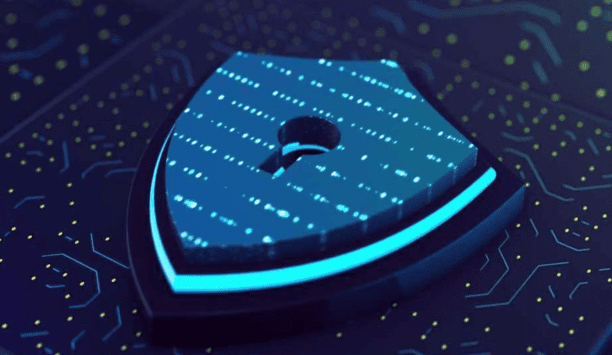
AI in security solution
Download
Unlocking wide-angle camera dewarping
Download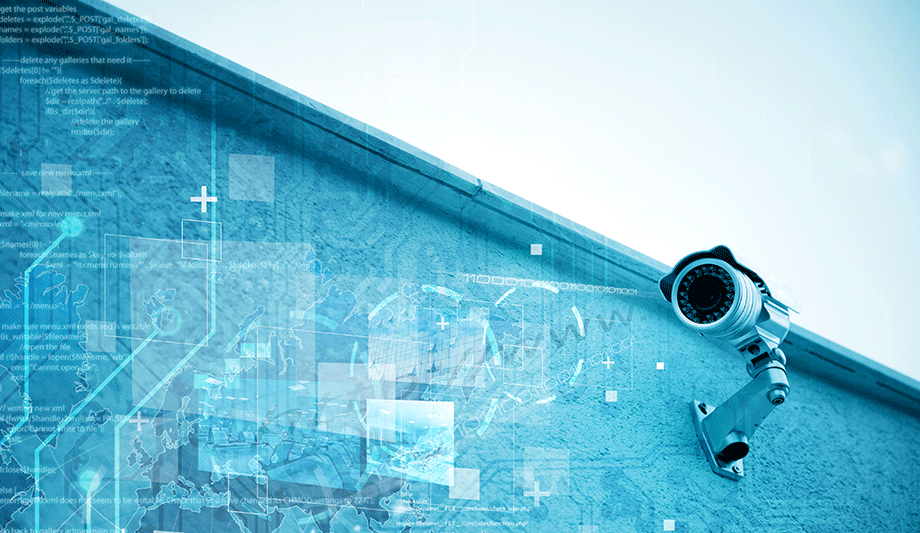
Empowering cameras with AI
Download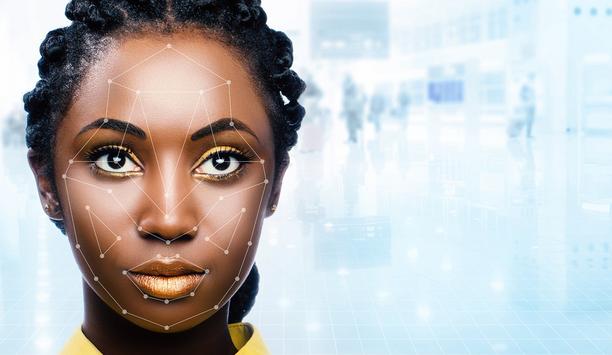
The rise of ethical facial recognition
Download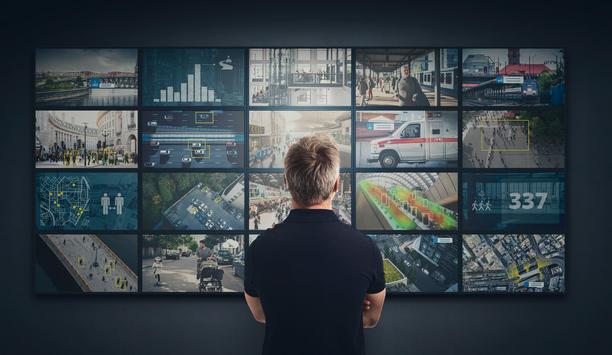
Connected video technology for safe cities
Download
How security systems ensure healthy workplaces during COVID and after
Download
Artificial intelligence: Understanding its place in physical security
Download


Using artificial intelligence (AI) to automate physical security systems
Download
A modern guide to data loss prevention
Download
7 proven solutions for law enforcement key control and asset management
Download
The truth behind 9 mobile access myths
Download
Access control system planning phase 2
Download



